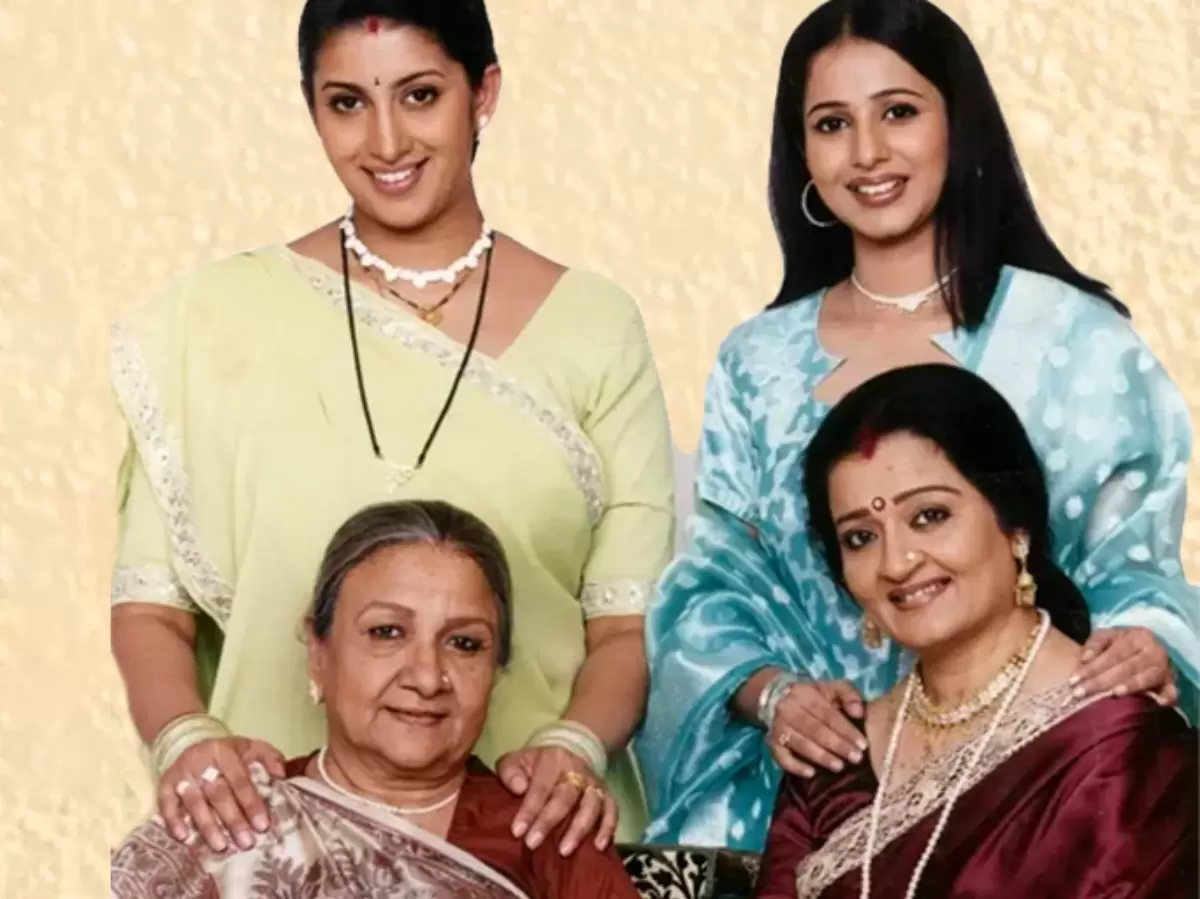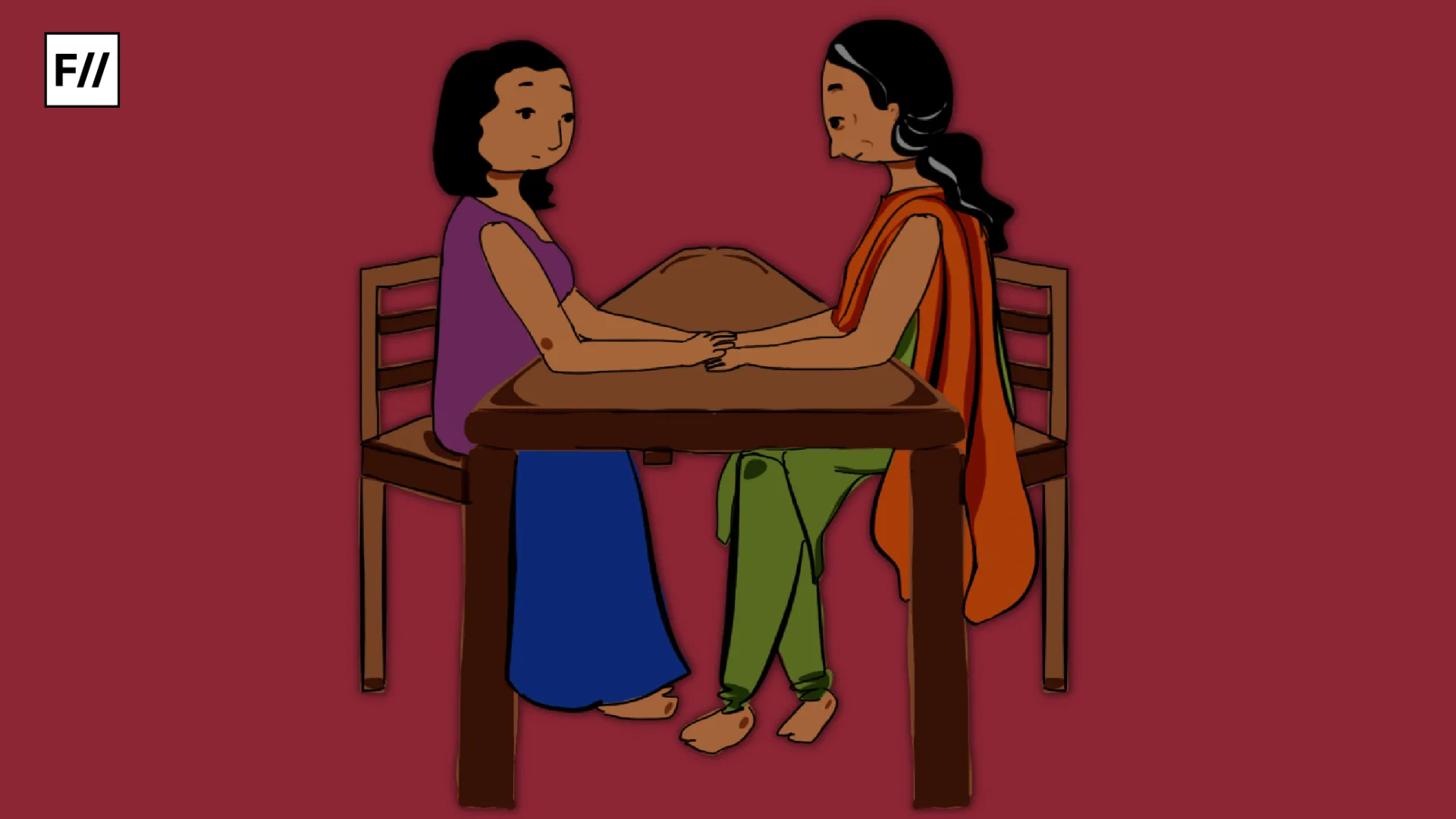Kyunki Saas Bhi.. started again in 2025. Out of curiosity, nostalgia, and a fondness for Smriti Irani, I tuned into the first episode. It was just as cringe-worthy as it had been in the 2000s—dramatic close-ups, long silences, and the inevitable saas-bahu conflicts.
But it left me with a lingering question—why are women’s relationships, especially among in-laws, often framed around power and control? Why do women, who face similar forms of patriarchal oppression, end up becoming rivals within the household? Why does a mother-in-law feel the need to dominate her daughter-in-law? Why must a jethani (elder sister-in-law) assert seniority over the devrani (young sister-in-law), or a nanand (husband’s sister) over the bhabhi (brother’s wife)? More importantly, why does this cycle simply reverse itself over time, instead of breaking?
Why does a saas feel the need to dominate her bahu? Why must a jethani assert seniority over the devrani, or a nanand over the bhabhi?
These questions are not just about personal resentment. They’re about how women are socialised in a patriarchal society—one that subtly, but consistently, trains them to police one another.
It starts early
From childhood, girls become conditioned to believe that women’s friendships are fragile and shallow. They perceive that female spaces are full of jealousy, competition, and backbiting. This idea is reinforced in the home itself—when a paternal grandmother mocks the mother, a paternal aunt adds to the taunts, and the mother is left isolated as ‘the outsider’. Little girls learn from this: women don’t stand together—they survive by undermining one another.
But why must women fight each other when they’re already dealing with so many visible and invisible controls? The answer lies in how patriarchy functions: by distributing power unequally and then forcing those with the least power to compete for scraps.
It’s not personal, it’s structural
This power play between women is often mistaken for personality clashes, but it is structural at its core. It’s not “natural” for women to be antagonistic—it’s learned behaviour. It is a survival strategy within a system that offers them limited autonomy and respect.
In most Indian families, daughters/sisters—however loved—are taught to obey their fathers and brothers. Wives—however independent—are expected to defer to husbands. As women, their value often rests on the extent to which they sacrifice for their male family members. In such a structure, the only “safe space” where women are granted authority is over other women—especially the younger or newly married ones.
Hence, a mother-in-law asserts control over her daughter-in-law because it’s one of the safest domains where she executes power without restrictions or judgments. A jethani guards her seniority over the devrani to affirm her standing. A nanand may claim her privileges over a bhabhi because that’s what tradition taught her to expect.
Women As Gatekeepers Of Patriarchy
Patriarchy’s most insidious success lies in making women its most efficient enforcers. A woman’s clothing, work choices, or freedom of movement is often not policed by men directly—it is other women in the family who do so. These restrictions are passed down like family heirlooms.
This dynamic allows patriarchy to remain hidden in plain sight. It doesn’t always require overt male dominance. It survives through the everyday, normalised, internalised actions of women who have been socialised to guard tradition, submissiveness, and obedience.
And so, women don’t just pass on trauma—they pass on the tools of control that trauma gave them.
Loss of Allyship
The result of this system is that instead of bonding in solidarity, women are taught to see each other as threats. They compete for respect, love, validation, autonomy and decision-making power. This rivalry creates a vicious cycle, where every woman who gains a sliver of authority uses it to replicate the same hierarchy she once suffered under.
In doing so, we lose the potential for deep, transformative intergenerational solidarity—especially within Indian households, where women from different ages and backgrounds live together.
Of course, knowing that the problem is structural doesn’t make it easier to unlearn. A woman who has internalised patriarchy for decades cannot simply “snap out of it.” It’s unrealistic—and even unfair—to expect sudden change without acknowledging the pain and history that led to it.
Where there is a Will, there is a Way
It begins with empathy. Being willing to see each other not as threats but as survivors of the same system. It means setting boundaries without bitterness. Resisting control without cruelty. It means young women questioning the idea that respect must come from submission, and older women reevaluating whether their authority must come at the cost of someone else’s freedom.
In homes where decision-making is shared rather than handed down, where respect is mutual rather than hierarchical, a new culture of cooperation can grow.
A young woman may not dismantle patriarchy alone, but she can choose not to replicate it. She can opt out of controlling others, and she can extend empathy where she was denied it.
When even a few women within a household begin to choose understanding over control—whether they are saas or bahu, jethani or devrani, nanand or bhabhi—the atmosphere changes. Children grow up watching women who respect, rather than fear, one another. Families begin to be remembered not for their rivalries, but for their support systems.
Perhaps the most revolutionary act in society today is simply this: women cooperating, rather than competing, with each other. Women being allies, rather than foes, to each other. Women choosing empathy over hierarchy.
The revolution doesn’t always start outside. Sometimes, it starts in the home.




